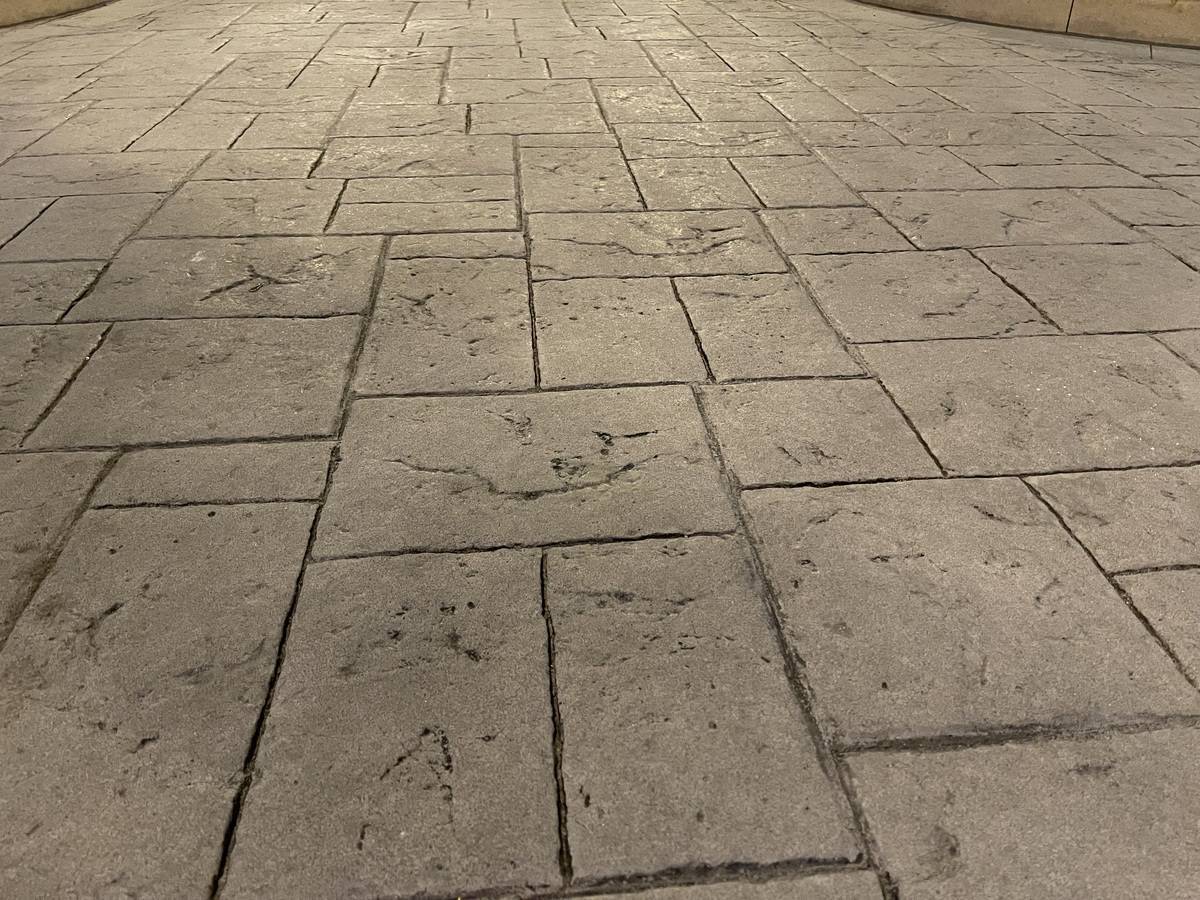
Stamped concrete is a decorative concrete surface that has been gaining popularity in recent years. It’s a technique that involves pressing patterns or designs onto freshly poured concrete using stamps. The result is a textured, patterned surface that mimics the look of other materials like stone, brick, or wood. Stamped concrete is used for a variety of applications, including patios, walkways, driveways, and pool decks.
Benefits of Stamped Concrete
One of the primary benefits of stamped concrete is its versatility. It can be customized to fit any design aesthetic, whether you’re looking for a rustic, natural look or a more modern, geometric pattern. Stamped concrete can also mimic the look of other materials, making it a cost-effective option for those who want the look of natural stone or brick without the high price tag.
Another benefit of stamped concrete is its durability. When properly installed and maintained, stamped concrete can last for decades. It’s also resistant to damage from weather, UV rays, and heavy foot or vehicle traffic. Additionally, stamped concrete is easy to clean and requires minimal maintenance, making it a low-maintenance option for busy homeowners and business owners.
Applications of Stamped Concrete
Stamped concrete can be used for a wide range of applications, including:
Patios: Stamped concrete is a popular choice for outdoor patios because it’s durable, easy to clean, and can be customized with a wide range of colors and patterns. It can also be textured to create a slip-resistant surface for added safety.
Walkways: Stamped concrete can be used to create beautiful and functional walkways that are slip-resistant and easy to maintain. It can also be customized with a variety of patterns and colors to match the surrounding landscape.
Driveways: Stamped concrete can be used to create a custom look for your driveway that complements the style of your home. It’s also resistant to damage from vehicles and heavy use.
Pool Decks: Stamped concrete is a popular choice for pool decks because it can be textured to create a slip-resistant surface that’s safe for swimmers. It can also be customized with a variety of colors and patterns to match the surrounding landscape.
Installation Process
The installation process for stamped concrete involves a few key steps:
1. Preparation: The area where the stamped concrete will be installed is excavated and leveled. A base layer of gravel and sand is added to provide a stable foundation for the concrete.
2. Pouring: The concrete is poured into the prepared area and leveled to ensure a smooth surface.
3. Stamping: Once the concrete has been set to the proper consistency, stamps are pressed onto the surface to create the desired pattern or design.
4. Coloring: Color is added to the surface of the concrete using a variety of techniques, including integral coloring, dry-shake color hardeners, and acid stains.
5. Sealing: The stamped concrete is sealed to protect it from UV rays, weather, and other environmental factors. Sealing also helps to prevent fading and other signs of wear and tear.
Maintenance of Stamped Concrete
Like any concrete surface, stamped concrete requires some basic maintenance to keep it looking its best. Here are a few tips for maintaining your stamped concrete:
1. Clean Regularly: To keep your stamped concrete looking its best, it’s important to clean it regularly. Use a mild detergent and water to remove dirt, grime, and other debris.
2. Reseal Periodically: Stamped concrete should be resealed every two to three years to protect it from UV rays and other environmental factors. Resealing will also help to prevent fading and other signs of wear and tear.
3. Avoid Harsh Chemicals: Avoid using harsh chemicals or abrasive cleaners on your stamped concrete, as they can damage the surface.
How Should I Care for Stamped Concrete?
Stamped concrete care essentials are vital to ensure its longevity and aesthetics. Start by regularly sweeping away debris, as dirt and leaves can become abrasive when walked upon. Clean stains promptly using a mixture of mild detergent and water, avoiding harsh chemicals that may damage the surface. Apply a concrete sealer every few years to maintain the protective layer. Finally, avoid activities that may scratch or chip the surface, such as dragging heavy furniture.
Final Thoughts
Stamped concrete is a versatile and durable option for those who want to add a decorative touch to their concrete surfaces. Whether you’re looking to create a custom patio, walkway, driveway, or pool deck, stamped concrete offers a cost-effective and low-maintenance option that can mimic the look of other materials. By following some basic maintenance tips, you can keep your stamped concrete looking its best for years to come.
